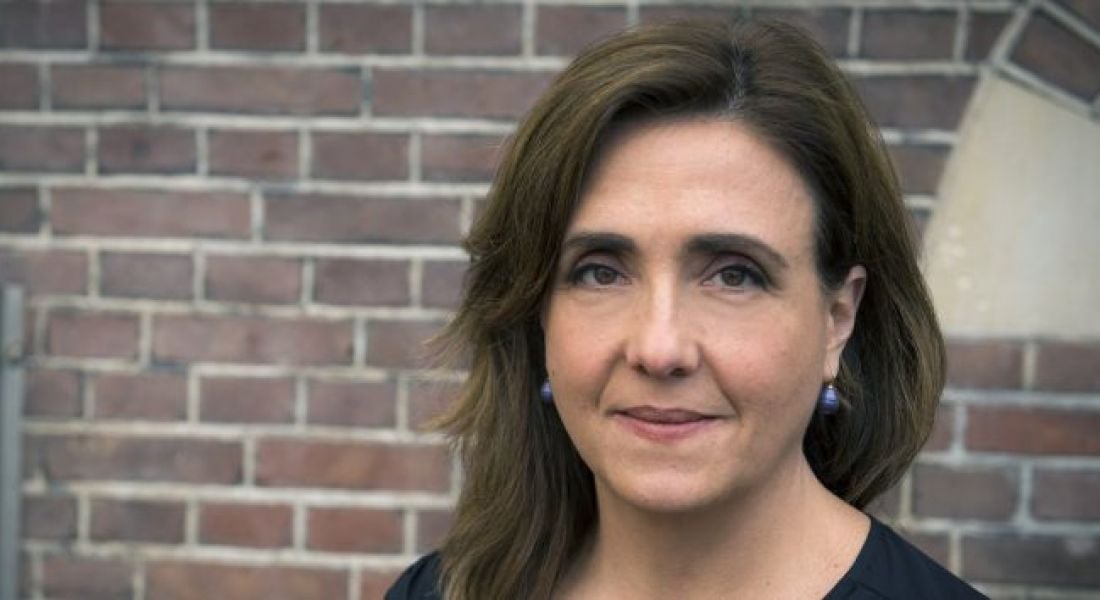As executive director at Equileap, Diana van Maasdijk wants to encourage transparency and create a positive feedback loop that will expedite the progress of workplace gender equality.
The road to gender equality is paved with unreliable data. Attempts to balance out the workplace have consistently been mired by the fact that there is a dearth of trustworthy available facts and figures on things such as gender ratios, average pay and parental leave policy.
Companies can be reticent on the subject. Even when they do reveal their gender breakdown, as was the case with Google last year, it can come with a number of caveats attached.
How do you make the arc of a company bend towards justice? Is it better to go with a ‘stick’ approach, such as the one championed by the UK government when it brought in legislation to force large organisations to disclose data? Is there a ‘carrot’ approach that could be a better alternative?
In the view of social enterprise Equileap, and its co-founder and executive director Diana van Maasdijk, the best approach is one that incorporates elements of both penalty and reward.
Equileap began in 2015 when Van Maasdijk and her co-founder Jo Andrews were discussing gender equality in the workplace – namely, that it wasn’t advancing quickly enough. A report released by the World Economic Forum in 2017 found that at the rate it’s going, the global economic gender gap won’t be closed for another 217 years.
Andrews and Van Maasdijk realised what was most vital to expediting gender equality in the workplace was, as Maasdijk puts it, “transparency”. They needed to be able to understand the entire gender parity ecosystem within large enterprises, “not just women on boards”. Other things come into play, such as “parental leave for both men and women, flexible working time, equal pay”.
“We thought that if we could make that available and transparent, then … people could put their investment capital behind it. There is the theory that when companies are better gender-balanced, they are also better at creating financial results and they have less risks. We were trying to put these two things together. We realised there was no one out there who had created a gender equality scorecard, who could really measure equality from the boardroom all the way to the supply chain.”
This is how Equileap’s gender equality scorecard, which was launched in 2016 and released reports in 2017 and 2018, was born. The scorecard is derived from the Equileap gender database, which gathers data from more than 3,000 publicly traded companies in 23 countries with a market capitalisation above $2bn.
The scorecard itself, Van Maasdijk explains, is inspired by the UN Women Empowerment Principles. These assess gender equality under various rubrics such as gender balance on the company’s board of directors, equal pay, flexible work options, parental leave, training and development, and more. In total, there are 19 different criteria for companies to satisfy, some of which are more heavily weighted than others.
The incentive part comes into play once the scorecard is produced. The data Equileap compiles is then passed on to investors who are interested in what Van Maasdijk calls “gender-lens investing”. Gender-lens investing can mean anything from investing in companies that are more gender-balanced to investing in companies whose products have a positive impact on the lives of women and girls. Above all, investing through the gender lens is about investing in companies that are having a new, positive impact on gender equality.
“We’re seeing how companies treat their employees and their supply chain. By having this scorecard, we can list companies who are doing better. Portfolio managers, just like they need data on carbon, on environment, to create responsible and environmentally friendly investment portfolios, they could use our data to add that lens to their portfolios.”
A win-win situation
What’s more, Van Maasdijk is quick to stress, those who invest through the gender lens can expect a financial boon to accompany their ethical one. Gender-balanced portfolios, much like environmentally conscious portfolios, “do better than their benchmarks”. This is where companies start to sit up and pay attention to the scorecard. A good result could put a smaller and lesser-known company on an investor’s radar. A bad result could, in turn, knock a business heavyweight off.
Equileap relies on publicly available data, so the scheme incentivises transparency. A company can’t be rated on something if it isn’t upfront about it. Almost half of the companies in the Equileap top 200 are transparent about average pay. The financial reward that faring so well in the rankings creates, Van Maasdijk hopes, will create a “positive feedback loop” that will push organisations towards correcting their standards and practices.
Ireland: A case study
While companies such as L’Oréal, General Motors, JPMorgan Chase, StarHub, Sanofi and Diageo enjoyed their places within the top 200 rankings, not a single Irish company managed to make the cut.
Only six Irish companies – CRH, Glanbia, Kerry Group, Kingspan, Ryanair and Smurfit Kappa – qualified to be a part of Equileap’s dataset. Allied Irish Bank and Bank of Ireland both fell out of the market valuation range between 2017 and 2018. None of these aforementioned companies attained a high enough score from the gender scorecard to place anywhere near the top.
It may be easy to blame this on Ireland’s diminutive size and relative lack of eligible firms. Yet Van Maasdijk argues that if a country such as Israel, which is comparable in size to Ireland, can penetrate the top 200, these Irish companies need to take a serious look at how they are organised.
“[The selected Irish companies] rank very, very low. The reason they rank so low is because in category A of our scorecard, which is looking at gender balance from the leadership to the workforce, they really do very poorly on that level; women don’t really make it to the boards. This is the main reason that brings them down so much because category A is our most heavily weighted for the final score.”




